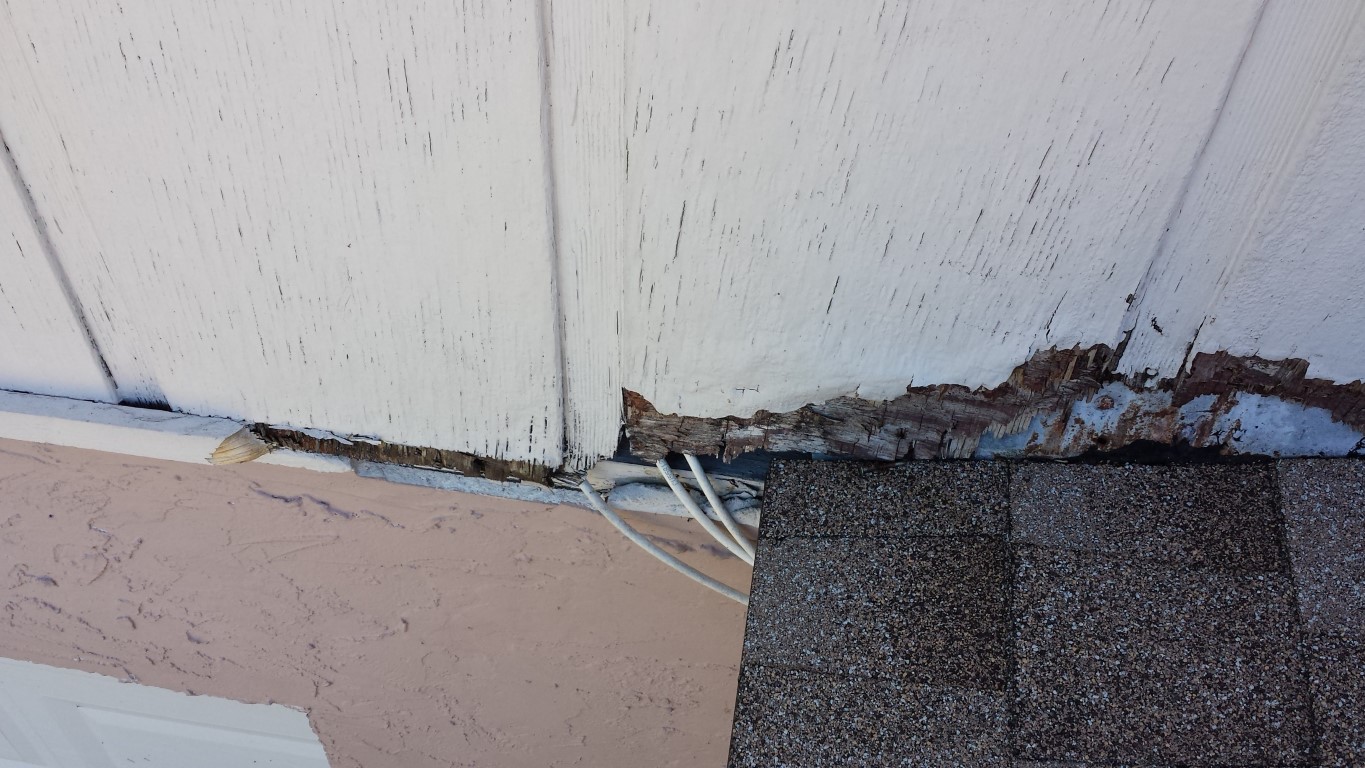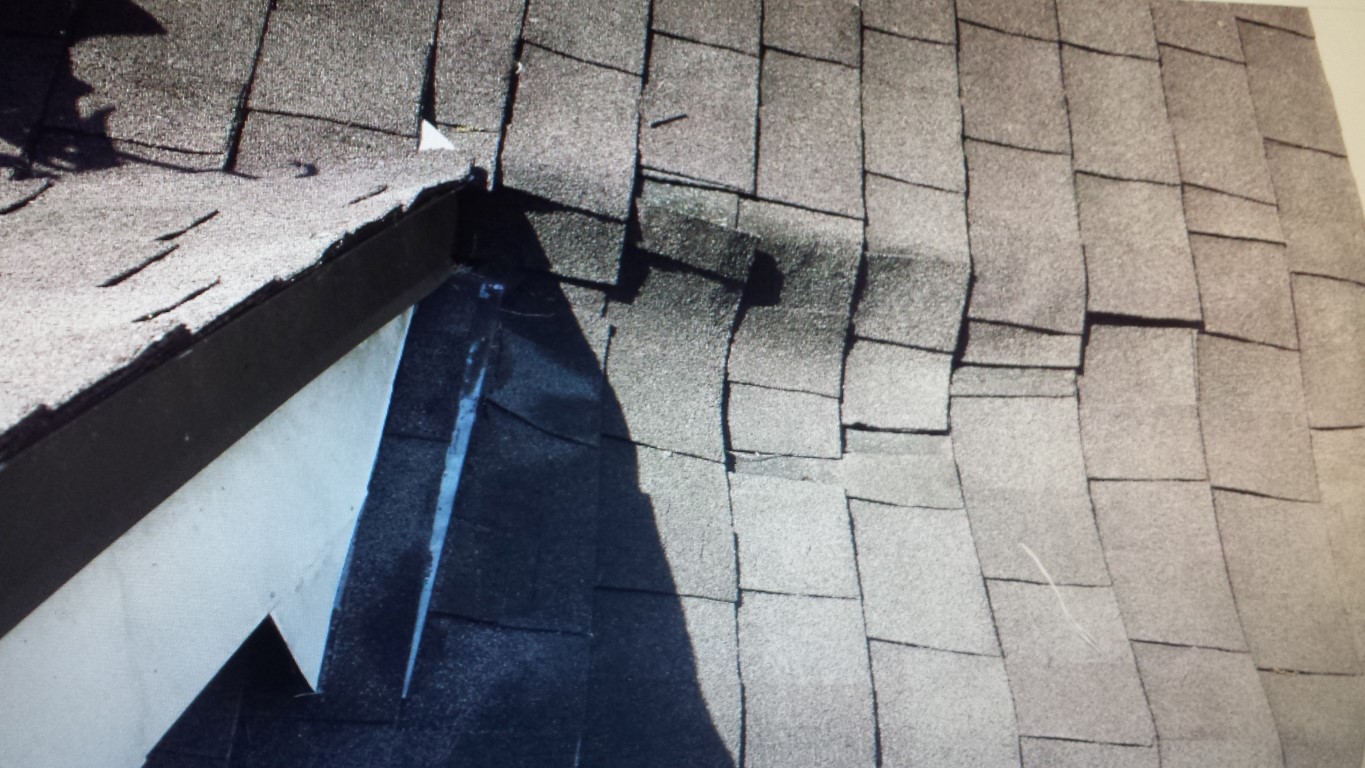Roof Defects
Example 1:
This home is approximately 30 years old and recently had a new roof put on. Like many roofers do on a regular basis, installing a roof has become a matter of speed rather than quality. This particular view is a small section of roof over the garage that butts into the main home and has T-1 11 siding on the cable. There was no kickout flashing installed on the original roof system which unfortunately was common practice over 30 years ago. Over the years, there has been decay of the T-1 11 because of the improper flashing detail, and now it looks like an electrician used the rotted area to run his wiring. It would have only taken minutes to install the appropriate flashing when re-roofed. This would have helped to kick the water away from the area preventing further damage.
Example 2:
In this example, the picture is showing a roof failure on an apartment building that was built approximately 10 years ago. You are looking at the bottom of the valley on a small dormer over the apartment below. Both the valley flashing and the L flashing below were cut slightly short allowing water penetration. This portion of roof is directly above an open balcony. After the water penetrated the roof system, it apparently ran down the sub decking and found an exit point through the vented soffit. This leak had been going on for years unnoticed.
Small construction flaws like this can be the cause of thousands of dollars of damage. If the water was entering an exterior wall system, it may have resulted in a large mold remediation job and/or possible structural damage. Such a minor and easy-to-fix flaw like this one can quickly result in litigation, subcontractors losing their jobs, money out of insurance agency pockets, and of course, stress for the homeowner. All of this can be avoided by doing the job right the first time before it becomes too late.


